Introduction
What would a big old tree tell you if it could talk? Would there be stories of local Indian tribes making camp nearby? Maybe early settlers passing by on their way to their new homestead? Or stories about some of your great great grandparents climbing its limbs when they were little children?
Big trees are usually pretty old trees, and some may even be historic in terms of their local significance. Perhaps you have one or more that appear in old land deeds such as: “… along a line to a large Post Oak tree a distance of 525 feet”. Is that big ‘ole tree still there? Or has it long since vanished to be replaced by a metal survey rod?
And just what constitutes “big” anyway? Is it the tallest, or biggest around, or the oldest, or what? The Monumental Trees website is a great one to visit to get some of these answers and see some really BIG trees. See the General Sherman, a Giant Sequoia, that is generally recognized as the biggest tree in the world – based on a total trunk volume measurement. Or the tallest tree in the world, a Coast Redwood, that measures 379 feet tall. How about the oldest living tree in the world, a Bristlecone Pine estimated at almost 4800 years of age – growing in time before there was Christianity or Islam, a time when Rome and Athens were not yet founded and the pyramids of Egypt had not been built – what stories could it tell?
Large majestic trees of various species may be found on your own property or that of someone you know here in Milam County and we’d love to find the biggest of them all. So, we have decided to engage the entire County in finding the largest trees of each major species.
Here are a just a few record holders.
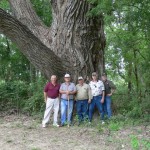 Largest Cottonwood in Texas
Largest Cottonwood in Texas
An example of a “big tree”, and the current State of Texas record holder for Cottonwood trees is shown at right. This tree is in Falls County near Bremond on the Little Brazos River and includes pictures of retired Wildlife Division employees standing beside it. It beat out a tree from Bandera County by 87 points that held the state record for 26 years. See Texas Forest Service Big Tree website for more information about Big Trees in Texas. Also see the Famous Trees of Texas website for some interesting information on famous trees around the state, and in nearby counties. Does Milam County have any?
Largest Cottonwood in Milam County
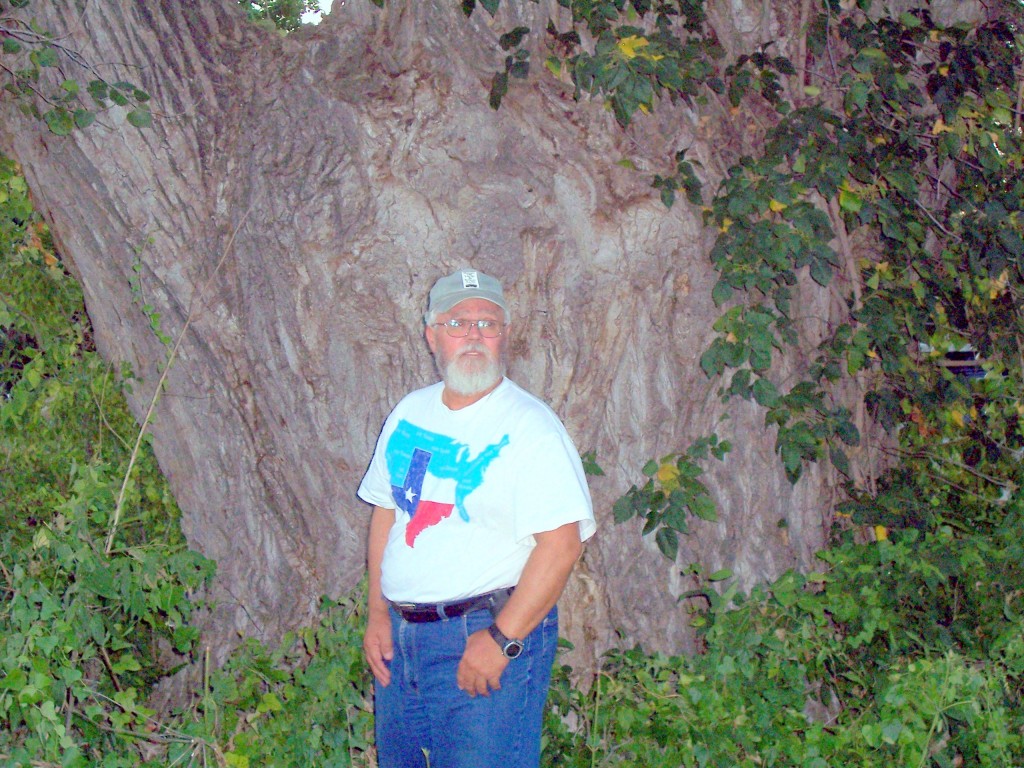 Original post: We located and measured what we believe is the largest of this species in our county, located in Samuel Park near the intersection of MLK and 4th Street in Rockdale. A bit overgrown with vines, and a little odd shaped, but still a fine specimen of this stately tree. Its somewhat elliptically shaped trunk measured 9 feet in diameter at its longest, and it has a 24 foot circumference. We didn’t get to measure its spread but it is not particularly large in that aspect, nor have we measured its height yet. If you do want to visit it, please beware of the poison ivy wrapped around it! UPDATE: Paul worked with Rockdale to clean out the ivy and other brush, and this is a more recent photo:
Original post: We located and measured what we believe is the largest of this species in our county, located in Samuel Park near the intersection of MLK and 4th Street in Rockdale. A bit overgrown with vines, and a little odd shaped, but still a fine specimen of this stately tree. Its somewhat elliptically shaped trunk measured 9 feet in diameter at its longest, and it has a 24 foot circumference. We didn’t get to measure its spread but it is not particularly large in that aspect, nor have we measured its height yet. If you do want to visit it, please beware of the poison ivy wrapped around it! UPDATE: Paul worked with Rockdale to clean out the ivy and other brush, and this is a more recent photo: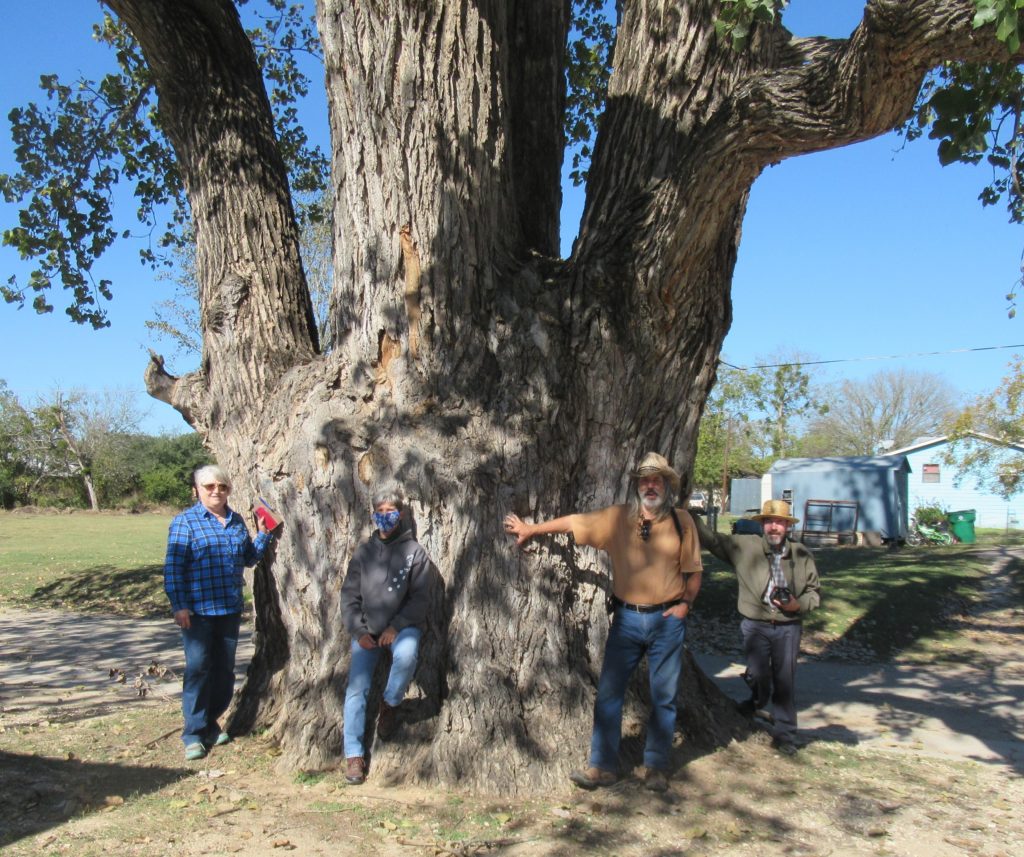
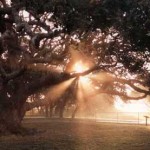
Largest Live Oak in Texas:
Located in Goose Island State Park in Rockport, this tree was named State Champion Coastal Live Oak (Quercus virginiana) in 1969, and is thought to be one of the largest in the nation. Estimated to be over 1000 years old, the “Big Tree” has a circumference of 35 feet, is 44 feet in height and has a crown spread of 90 feet. (From Texas Parks and Wildlife website).
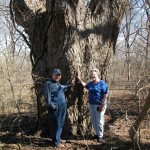 Largest known Native Pecan tree in Milam County
Largest known Native Pecan tree in Milam County
Located in Thorndale, just north of the San Gabriel River and west of FM 486, on the Leonard Dearing property. It has a reported circumference of 235 inches, height of 102 feet, and a canopy spread of 110 feet. Unfortunately, it was badly damaged in a storm a few years ago. Who’s got the next biggest one in the county?
Big Trees of Milam County Nomination Process [Note: this process is not being actively pursued at this time, but nominations are welcome.]
Our nomination rules will be very simple. Take a circumference measurement between the ground and the 4 ½ foot level that represents the smallest size of the tree trunk. We say “smallest” to eliminate including large bumps, spread out roots or attached vines, and for a consistent standard. Then submit a nomination form. Our Big Tree committee will then make a site visit for verification and photo taking. The five largest trees of each species will be featured here on the web site.
Download instructions and nomination form in PDF form
Please visit our tree page on our photo website for more pictures of our favorite trees in and around Milam County, and elsewhere.


